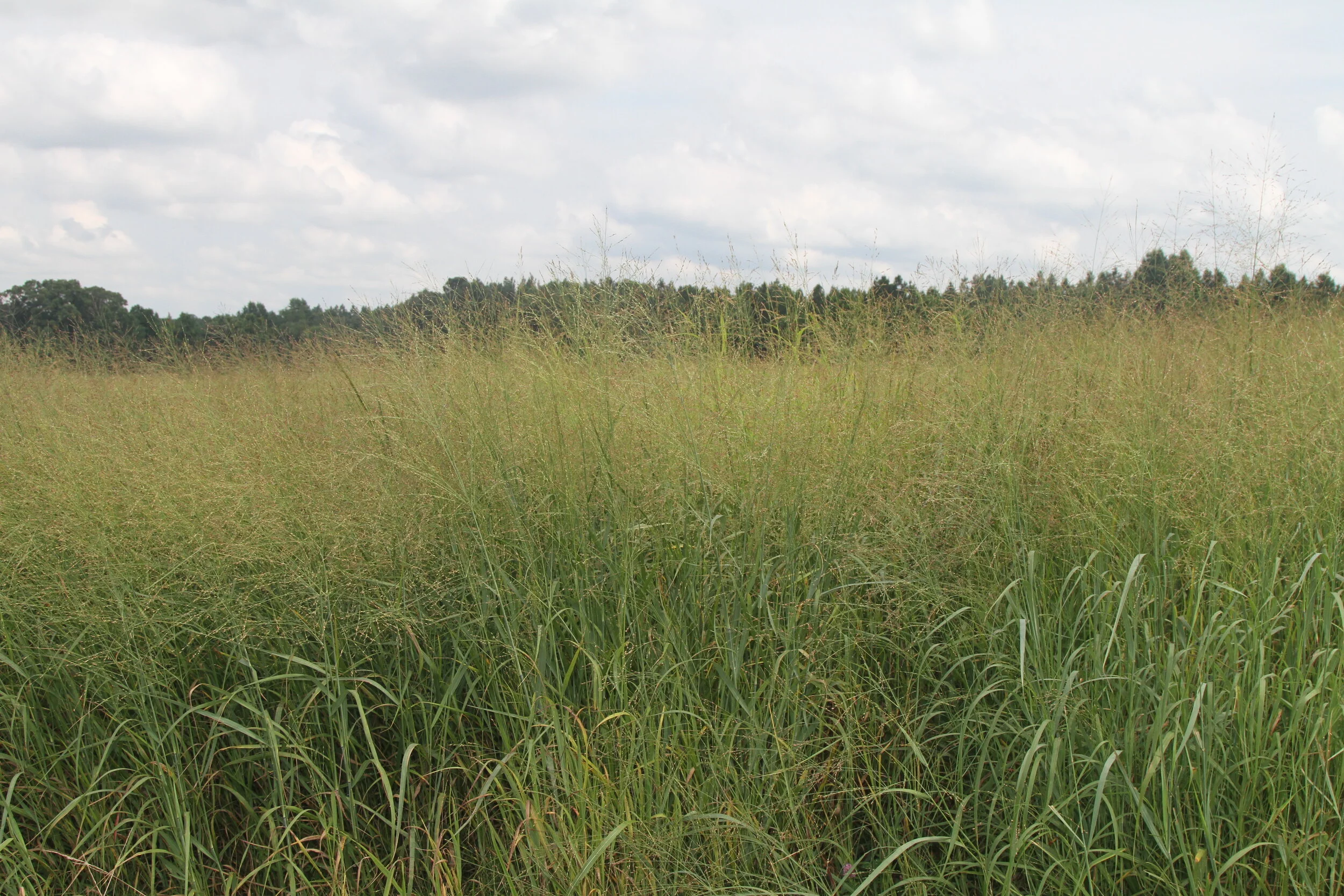
More than sustaining, we’re regenerating soil and sequestering carbon.
Learn about our practices
Grassfed Beef
Our grassfed, grass finished beef is what we offer our community and is the product of all our work. We focus on producing top quality meats for our family and yours. We truly grass finish our animals by grazing nutritious pastures, keeping enough quality forage available to the livestock, and focusing on selecting and breeding for grass type genetics, animals that thrive in our environment and under our care. All these factors provide top quality meats for central Virginia. We have breeding stock and finishing steers available to local farms.
Building Soil
When pastures are rotationally grazed and properly rested and recovered between grazings, the grass is not grazed too short. The plants grow deep roots, becoming drought resistant, holding the topsoil in place and finding nutrients deep in the earth. The animals also trample some of the plant material where they are grazing. This increases the organic matter of the soil and feeds the soil biology. Organic matter holds water like a sponge, reducing affects of droughts, and greatly reducing runoff during heavy rains. This reduces floods and nutrient runoff into creeks while recharging ground water levels.
Sequestering Carbon
Native and improved grazing lands are a significant sink for long-term carbon sequestration and play an important role in mitigating global climate change. Because grazing lands occupy a vast area throughout the world, small changes in the amounts of carbon stored in this ecosystem can have significant consequences in the overall carbon cycle and atmospheric CO2 levels. Improved production of plants, increased soil biology as well as increased organic matter in the soil are all ways to sequester carbon from the atmosphere.
Clean Water
By fencing out 92 acres of riparian buffer and committing to keeping animals out of all streams and farm ponds, we are improving the water quality in the York River Watershed and ultimately the Chesapeake Bay. And our planned rotational grazing allows the soil to absorb more rainfall, reducing run-off and recharging ground water. Our springs and creeks are clean and full of life.
Wildlife Habitat
Our regeneratively grazed pastures and 120 acres of woodlands give wildlife a place to call home. Maintaining 60 acres of native warm season perennials, bunch grasses which grow quite tall in the summer, give animals such as quail and turkey cover for nesting. We love having black bear living in our woods, with the deer, turkey, coyotes, bobcat, fox, hawks, owls and many other species.
Soil Microbiome
Our no-plow methods for planting and seeding our pastures keeps soil microbes intact and growing. And planned rotational grazing promotes diverse and healthy soil biology making available nutrients from the soil. This is important for creating healthy, disease resistant plants, which in turn produces the healthiest, most delicious grassfed beef.
What is Regenerative Grazing?
Regenerative grazing produces the best beef while improving soil quality, wildlife habitat and the environment.
By frequently moving our herd through small paddocks, we are allowing the pastures enough time to rest and grow before the animals come back and graze it again. This type of grazing allows the grass to remain truly healthy, avoiding the stress of overgrazing. The grass develops deep roots that allow the plant access to a wider field of nutrients, making the grass more nutritious for the cattle. The deep roots also make the grass more drought resistant, allowing for healthy grazing even in times of diminished rainfall. The constant plant cover of our soils helps retain moisture in the ground and it moderates the soil temperatures, keeping them much cooler in the summer. With healthy deep roots present, we do not need to spread chemical fertilizers to feed the pastures. As the herd moves through the smaller paddocks they are less selective and graze a wider variety of grasses, forbs and browse. They also trample the plants that they do not eat. This process increases the soil mass and fertility through decaying plants and cow manure and decreases our need to use petroleum powered tractors to clip pastures for weed control. This system of growing large amounts of biomass, grazing and trampling it a few times a year and letting it fully recover between grazing increases the organic matter in the soil, which sequesters carbon dioxide from our atmosphere. All of this leads to a habitat that is healthier and inviting for wildlife species and produces a well finished beef animal that has had access to chemical free pasture from the day it is born until it goes to the butcher. We move our animals daily, so they are very used to people and lead a stress free life. We believe that our humane, environmentally responsible, regenerative grazing approaches give us the best possible grassfed beef. If you have any further questions, please check out our links for more information about regenerative grazing.






